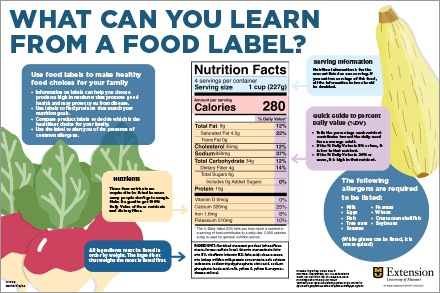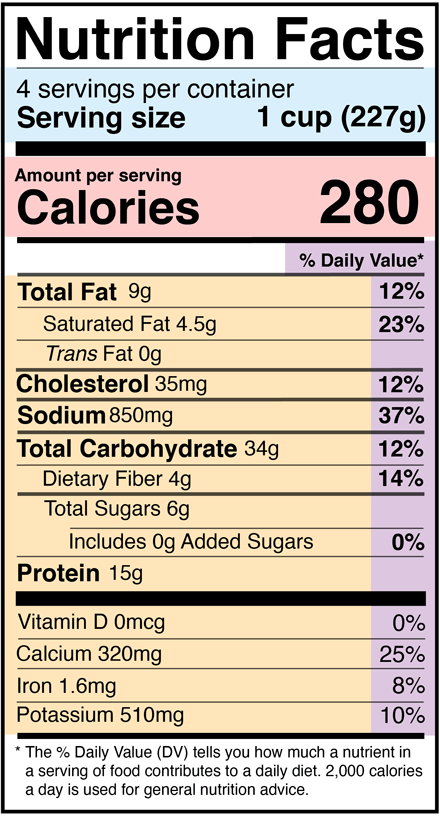Editor’s note
You can read this publication on this page or download the PDF.
See the companion publication N1010, Understanding Food Labels Handout.

This poster explains the information shared on a food label. It discusses nutrients, percent daily value, serving information, and the ingredients list.
The printed poster is 36-by-24 inches, printed in color on high-gloss poster stock, and rolled and shipped in a tube.
See poster content below.
What Can You Learn From a Food Label?

Use food labels to make healthy food choices for your family
- Information on labels can help you choose products high in nutrients that promote good health and may protect you from disease.
- Use labels to find products that match your nutrition goals.
- Compare product labels to decide which is the healthiest choice for your family.
- Use the label to alert you of the presence of common allergens.
Serving information
Nutrition information is for the amount listed as one serving. If you eat two servings of this food, all the information below should be doubled.
Nutrients
These four nutrients — vitamin D, calcium, iron and potassium — are required to be listed because many people don’t get enough. Make it a goal to get 100% Daily Value of these nutrients and dietary fiber.
Quick guide to percent daily value
- Tells the percentage each nutrient contributes toward the daily need for an average adult.
- If the % daily value is 5% or less, it is low in that nutrient.
- If the % daily value is 20% or more, it is high in that nutrient.
Ingredients
All ingredients must be listed in order by weight. The ingredient that weighs the most is listed first.
Allergens
The following allergens are required to be listed:
- Milk
- Eggs
- Fish
- Tree nuts
- Sesame
- Peanuts
- Wheat
- Crustacean shellfish
- Soybeans
(While gluten can be listed, it is not required.)